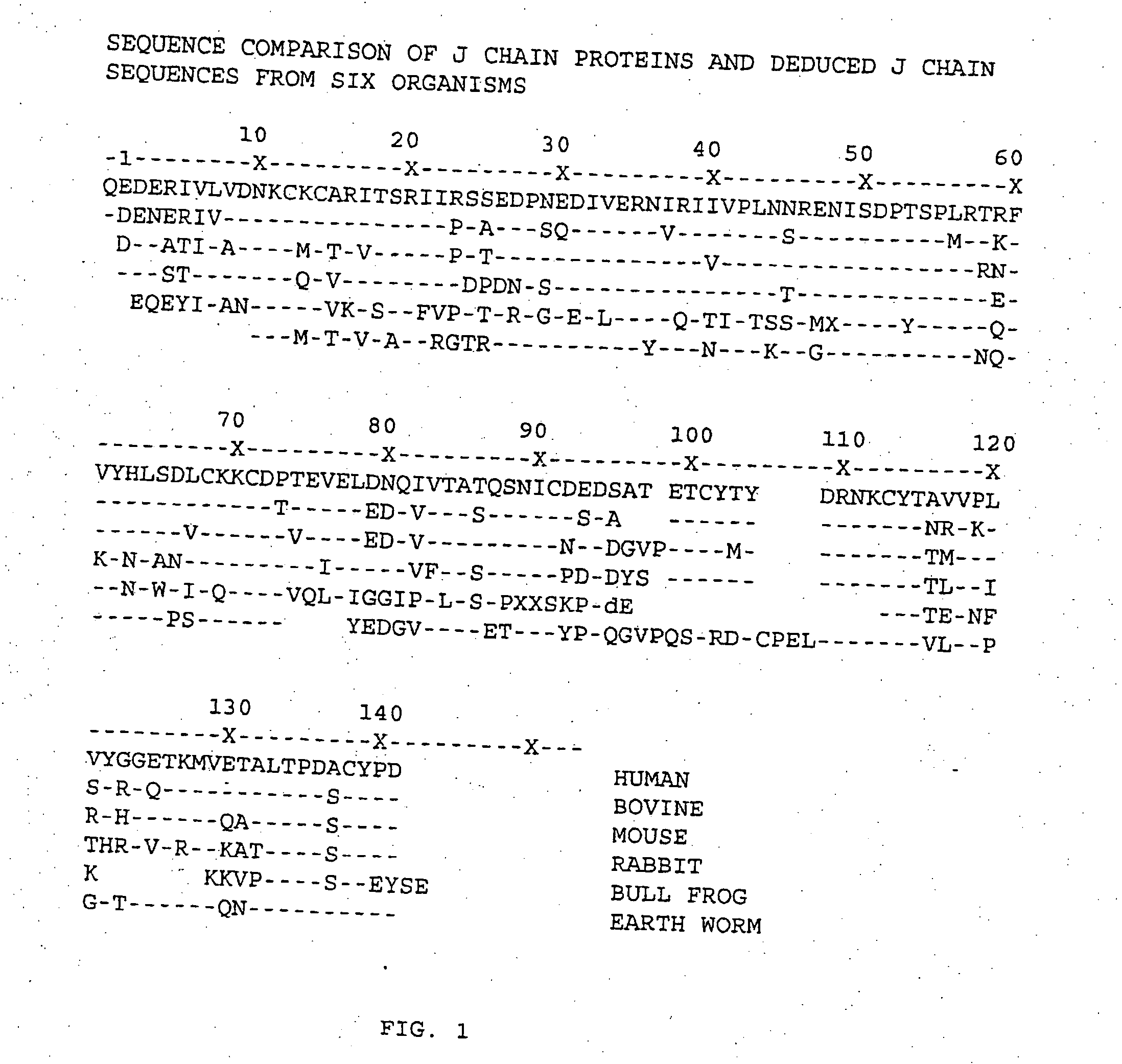Novel epithelial tissue imaging agent
a tissue imaging agent and epithelial tissue technology, applied in the field of diagnostic compound targeting, can solve the problems of limited use of imaging agents and no technology for such targeting
- Summary
- Abstract
- Description
- Claims
- Application Information
AI Technical Summary
Benefits of technology
Problems solved by technology
Method used
Image
Examples
example 1
Preparation of Targeting Molecules
[0084] This Example illustrates the preparation of representative targeting molecules.
A. Purification of Representative TMs from Biological Sources
[0085] Preparation of Dimeric IgA (dIgA).
[0086] Ten ml of human IgA myeloma plasma (International Enzymes, Inc.; Fallbrook, Calif.) is mixed with an equal volume of PBS, and 20 ml of saturated ammonium sulfate (in H2O) is added dropwise with stirring. After overnight incubation at 4° C., the precipitate is pelleted by centrifugation at 17,000×g for 15 minutes, and the supernatant fraction is discarded. The pellet is resuspended in 2 ml PBS. The resulting fraction is clarified by centrifugation at 13,500×g for 5 minutes and passage through a 0.45 μm filter (Nylon 66, 13 mm diameter, Micron Separations, Inc., Westborough, Mass.). Two ml (about half) of the clarified fraction is applied to a Sephacryl® S-200 column (1.6×51 cm; 0.25 ml / min PBS+0.1% sodium azide) (Pharmacia, Piscataway, N.J.), and 2 ml fr...
example 2
Linkage of Imaging Agents to TM
[0169] This Example illustrates the preparation of dimeric IgA and TM linked to fluorescent and magnetic resonance imaging agents.
A. Dimeric IgA Directly Attached to Imaging Compounds
[0170] Native dimeric IgA isolated from biological sources as described above is reacted with the N-hydroxysuccinamide esters of (a) cyanine fluorochromes (Biological Detection Systems, Pittsburgh, Pa.) and (b) a manganese derivative of a sulfocyanine fluorochrome (MnPcS4) prepared as described (Saini et al., Magnetic Resonance Imaging 13:985-990, 1995; Webber and Busch, Inorg. Chem. 4:469-471, 1965). The linkage reactions are performed as follows. Dimeric Ig is equilibrated with 0.1 M sodium bicarbonate, and pH adjusted to 8.7 using NaOH. The dIgA solution is then added directly to dyes either dried under vacuum onto the surface of the reaction vessel or previously dissolved in water. The NHS-diesters react spontaneously with protein amino groups at neutral or basic p...
example 3
Delivery of Imaging Agents
A. Delivery of Imaging Compounds to Cells in vitro
[0185] Transcytosis of Fluorescent Imaging Agents Using Dimeric IgA.
[0186] Confluent pIgR+ MDCK cell monolayer filters are incubated at the basolateral surface for twenty-four hours with dIgA attached directly to imaging agents (cIgA-cyanine) prepared as described above. Cells are then detached with trypsin (0.25% in 0.02% EDTA) (JRH Biosciences, Lenexa, Kans.), cytocentrifuged onto glass slides, and fixed with acetone. Fluorescence microscopy is used to detect the presence of the imaging agent in cells. Fluorescence in the upper chamber (apical) fluid was also measured. Cells incubated with the dIgA conjugates yield fluorescence only in the apical chamber and not inside the cells indicating the quantitative transcytosis of fluorescent compounds. In contrast, the free fluorescent compounds (unconjugated) partition inside the cells but no transcytosis to the apical surface is detected.
[0187] Transcytosis...
PUM
| Property | Measurement | Unit |
|---|---|---|
| pH | aaaaa | aaaaa |
| temperature | aaaaa | aaaaa |
| volume | aaaaa | aaaaa |
Abstract
Description
Claims
Application Information
 Login to View More
Login to View More - R&D
- Intellectual Property
- Life Sciences
- Materials
- Tech Scout
- Unparalleled Data Quality
- Higher Quality Content
- 60% Fewer Hallucinations
Browse by: Latest US Patents, China's latest patents, Technical Efficacy Thesaurus, Application Domain, Technology Topic, Popular Technical Reports.
© 2025 PatSnap. All rights reserved.Legal|Privacy policy|Modern Slavery Act Transparency Statement|Sitemap|About US| Contact US: help@patsnap.com

